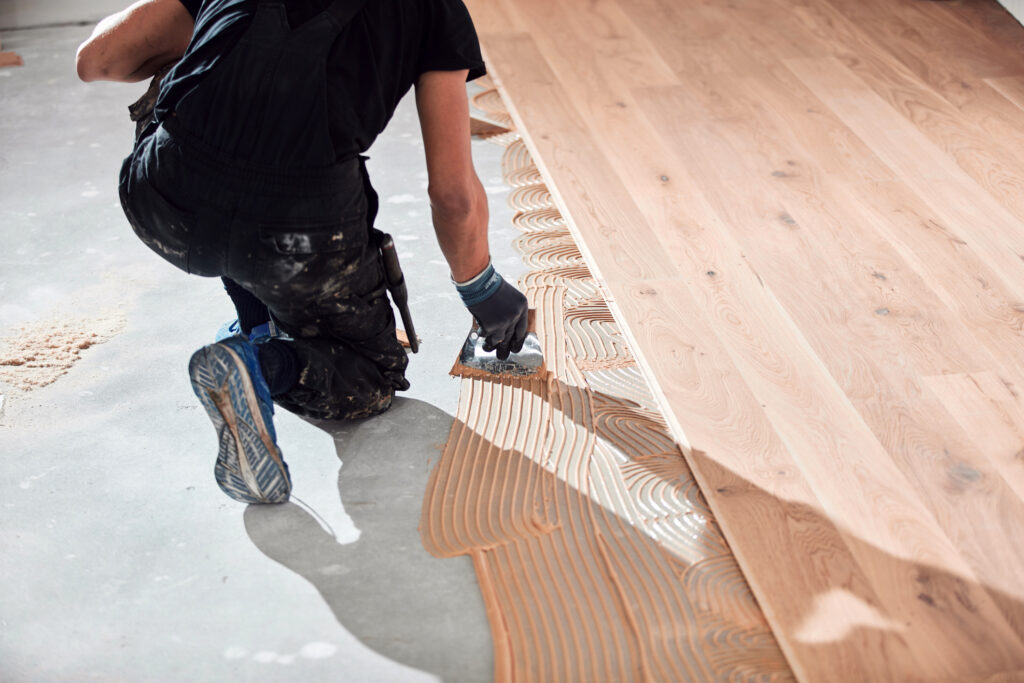Flooring, Home Improvement
When to Redo Your Floors: A Comprehensive Guide
Knowing when to replace your floors can be tricky. Here are some signs that it might be time for a new floor:
1. Wear and Tear:
- Scratches and Dents: If your floors are showing signs of significant wear and tear, such as deep scratches or dents, it might be time for a replacement.
- Stains and Watermarks: Persistent stains or watermarks that can’t be removed are also indicators of floor damage.
2. Structural Issues:
- Sagging or Uneven Floors: If you notice sagging or uneven areas in your floors, it could be a sign of underlying structural problems that need to be addressed before replacing the flooring.
3. Outdated Style:
- No Longer Matches Your Décor: If your floors no longer complement your home’s style or design, a new floor can give your space a fresh and updated look.
4. Allergies and Health Concerns:
- Allergies or Asthma: If you or someone in your household suffers from allergies or asthma, older flooring materials like carpet can trap allergens and dust. Consider replacing them with a hypoallergenic option like hardwood or vinyl.
5. Energy Efficiency:
- Drafts and Cold Spots: If you notice drafts or cold spots coming from your floors, it could be a sign of inadequate insulation. Replacing your flooring with a more energy-efficient material can help reduce your heating costs.

Factors to Consider When Choosing New Flooring:
- Lifestyle: Consider your lifestyle and the amount of foot traffic your floors will receive. For example, if you have pets or young children, you’ll need a durable material that can withstand heavy wear and tear.
- Budget: Determine your budget for the flooring project. Flooring materials vary widely in price, so it’s important to set a realistic budget before shopping.
- Aesthetics: Choose a flooring material that complements your home’s style and decor. Consider the color, texture, and overall aesthetic of the flooring to ensure it fits seamlessly with your existing design.
- Maintenance: Consider the maintenance requirements of different flooring materials. Some materials, such as hardwood, require more regular cleaning and maintenance than others.
Timing Your Flooring Project:
While you can replace your floors any time of year, there are certain seasons that may be more ideal depending on factors like weather and scheduling.
- Spring and Summer: These seasons offer mild weather, making it easier for contractors to work and for floors to dry and cure properly. However, it’s important to be mindful of seasonal price fluctuations and increased demand during these months.
- Fall: Fall can be a good time to replace floors, as the weather is typically mild and there may be fewer contractors booked compared to the peak seasons.
- Winter: While it’s possible to replace floors in the winter, it’s important to be aware of potential challenges such as colder temperatures that can affect drying times and installation processes.
Additional Tips:
- Get Professional Advice: Consult with a flooring professional to assess the condition of your existing floors and recommend the best course of action.
- Consider the Environment: If you’re environmentally conscious, look for flooring materials made from sustainable sources or recycled materials.
- Don’t Forget the Underlayment: A quality underlayment can improve the comfort, insulation, and durability of your new flooring.
By carefully evaluating these factors and considering the timing of your project, you can ensure a successful and hassle-free flooring replacement.
